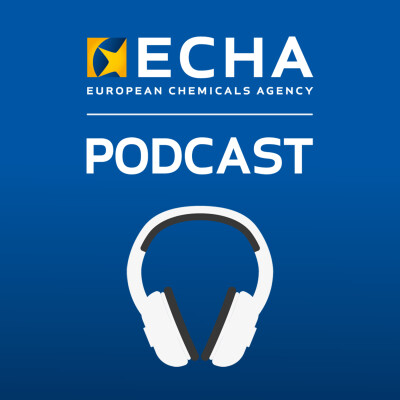Assessing EU's chemicals legislation: more needs to be done to make chemicals safe and sustainable
00:00 / 23:56
1,286
Chapters
#1
Introduction of the guests and topics of the podcast
00:40
#2
What do the EEA and ECHA agencies do?
01:15
#3
How did the two agencies unite their forces to collaborate in this project and also others similar?
02:59
#4
Why do we need the indicators?
05:46
#5
What are the specific parameters that are being considered within this framework?
07:14
#6
How will these indicators help to monitor the impacts of chemical policy in Europe?
08:25
#7
How does the collaborative process take place between the various agencies and institutions into establishing the indicators?
09:51
#8
What are the key messages that have emerged from the EEA and ECHA's point of view on this project?
11:14
#9
What are ECHA's prospective on the project?
13:34
#10
How do the EEA and ECHA vision the indicators in contributing to the industrial transition and towards the production of safer chemicals?
15:20
#11
What kind of challenges have the two agencies encountered during the development of the framework and how are they being addressed?
16:22
#12
How will the framework ensure the transparency of information and make it available to all stakeholders and the public?
17:53
#13
Who do the two agencies see using the framework of indicators?
18:45
#14
What are the next steps for this project?
20:34

Assessing EU's chemicals legislation: more needs to be done to make chemicals safe and sustainable
Welcome to this episode of the Safer Chemicals Podcast, where we look into the EU indicator framework for chemicals, focused on improving chemical safety across Europe.
The transition towards safer and more sustainable chemicals is progressing in some areas, while in others, it is just beginning. This is the finding of a first, joint Europe-wide assessment of the drivers and impact of chemical pollution by the European Environment Agency (EEA) and the European Chemicals Agency (ECHA). The benchmarking found that more work is still needed to reduce the impact of harmful substances on human health and the environment.
We are joined by Leena Ylä-Mononen, the Executive Director of EEA and Sharon McGuinness, the Executive Director of ECHA. Together, they discuss the roles their agencies play in developing these indicators. This episode offers an in-depth look at how these agencies work together to support safer chemical management, highlighting the real-world impact of their work on environmental and public health.
We'll explore the challenges faced during the project, the collaboration between various European institutions, and what future developments we might expect in the realm of chemical safety.
Background
According to the joint EEA-ECHA synthesis report on the EU indicator framework for chemicals, the overall use of the most harmful chemicals (in particular those that are carcinogenic, mutagenic and reprotoxic) is still growing but more slowly than the overall chemicals market growth. Pressure is increasing to avoid the use of so-called substances of concern and to implement the principles of the safe and sustainable by design framework.
There is a need to more effectively ensure that consumer products do not contain the most harmful substances, for example chemicals that are endocrine disrupting, that negatively affect the hormone system, or substances that are persistent, bioaccumulative and toxic, which present a risk for years to come even after their use has ceased.
More data and information are needed to better understand human and environmental exposure to those most harmful chemicals and their impacts. Still, the indicators show clearly that the shift to safe and sustainable chemicals must continue and should even be accelerated.
Listen to our episode for a deep dive into what the main findings of this initial assessment were and check the online dashboard for more details.
Useful links
**************
Follow us on:
Disclaimer: Views expressed by interviewees do not necessarily represent the official position of the European Chemicals Agency. All content is up to date at the time of publication.
Hosted by Ausha. See ausha.co/privacy-policy for more information.
Powered by Ausha 🚀